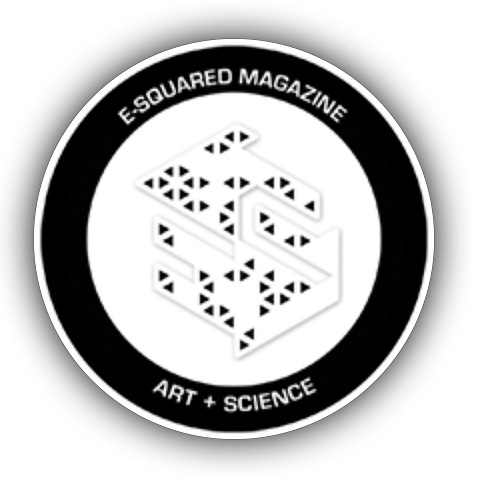How to Boost Your Creative Thinking to the Maximum!
/There are four strategies that I use in my studio practice as an artist, which collectively help me to produce my unique and creative artworks. I would like to share these strategies with you because I believe that in today's world creative thinking is one of the most valuable skills. I hope that the tips I share in this post help you boost your creative thinking in your personal or professional life. Please let me know if these strategies help you in the comments below!
#1 : Eliminate Distractions and Establish Focus
You can’t have your best ideas when you're distracted every few minutes by social media, email notifications, Family members and other demands upon your time. Set aside some time for yourself and turn off your phone, take some deep breaths, slow down and relax. Creativity coach Cynthia Morris summarizes this principle in her fun video on Youtube!
Your focused attention is your super power. Cultivate it.
#2 Brainstorming
Now that you're focused it's time to brainstorm a lot of ideas around a theme of your interest. It's important to brainstorm everything you can think of without stopping. I suggest setting a 5 minute timer and record every idea. Do not judge yourself or eliminate any ideas at this stage. Use a tool you like to capture your ideas, such as simply writing a list. If you want to get a little bit fancy create a mind map. A mind map is a diagram illustrating the connections between many related ideas around a single theme. If you like to work on the computer rather than with pen and paper, I suggest the free mind mapping tool Coggle.
Free Mind Map Tool
its collaborative too!
As an artist, I like to record my ideas visually by sketching, and recording a few notes on the side of the sketch. I’m not that great at drawing so I don't usually show anyone my sketches. I just use drawings to brainstorm and plan ideas for artworks such as in this example:
3. Creative Experimentation and Play
Review the ideas you generated and pick a few that look promising- and then get busy trying those! Creative experimentation and play are crucial to discovering creative innovations and solutions. Don't get stuck in the trap of analysis paralysis. Just get busy trying out ideas and when you are done you can analyze your results to decide what ideas were the best. Remember you don't have to show the results to anyone, you're just playing, experimenting and learning! Here is a recent studio experiment I did. I tried making a pigment ink transfer onto copper anodized aluminum.
4. Give Yourself Permission to Fail!
Many people get stuck in the trap of perfectionism. Perfectionism can help you produce excellent work but if the impulse to be perfect is too strong it can prevent you from ever pushing yourself outside of your comfort zone. Staying in your comfort zone will not help you boost your creativity.
“It is worse to fail to try than then to try and fail."
I can't emphasize this enough. Give yourself permission to fail, a lot! Don't be hard on yourself. From every mistake there is a lesson to be learned that will help you improve the results the next time you try. If you are forgetful like me, take notes and review your notes on your next try. You are guaranteed a more successful outcome.
Its hard to admit mistakes but in the spirit of encouraging you, I am going to tell you a story about how I had a pretty epic failure. It took months of work to recover from it and to find a solution. In 2015 I innovated a new method of producing mixed media on aluminum image transfers and produced the first 15 artworks. To protect the artworks, I applied a post coating of acrylic gel medium which I knew is used by painters to seal paintings. What I did not know is that gel medium takes 6+ months to fully cure and during that time things can get stuck to it. Additionally I did not know that humidity was a factor in the tackiness of the surface. I stacked the artworks in a portfolio box and when I opened the box three months later all my artworks were stuck together! When I peeled the artworks apart they were destroyed. It was heartbreaking! Rather than give up, I used the experience as a learning opportunity.
One of the damaged artworks after unsticking it from another artwork!
So I set about remaking all those 15 damaged artworks and then I made another 30 more. However, this time I did considerable research into the variety of post coatings I could apply to protect the art. My criteria for selecting a coating was that it had to provide scratch protection, UV light protection, be water resistant, have good self leveling properties when drying and dry to be completely non sticky. I tested a wide variety of products.
After testing all these products on samples of my mixed media artworks on aluminum I selected the Lascaux product because it came in a semi-matte finish which most closely matches the look of the historic tintype that I seek to emulate in this series of artworks, its spray mechanism provides a very fine droplet, and it has good self leveling properties when drying to provide a smooth and even finish.
In summary, these four strategies when used all together enable anyone to have creative ideas, find innovative solutions to a variety of problems, and improve upon results over time. I hope these four strategies help you maximize your creativity!
If you enjoyed this post, please consider joining my Art Insiders Group by clicking the button on the top left of this page. You will get insider access into my creative process, the first updates about new artworks, tips on collecting and caring for art, subscriber only discounts, and invitations to exhibitions. You can expect to hear from me about twice a month.












